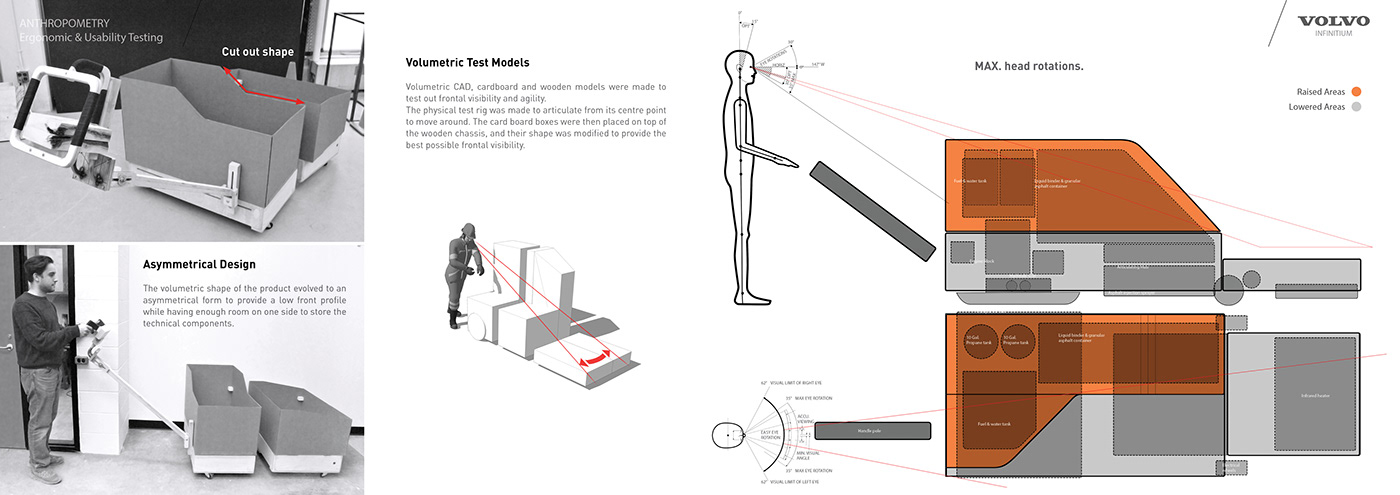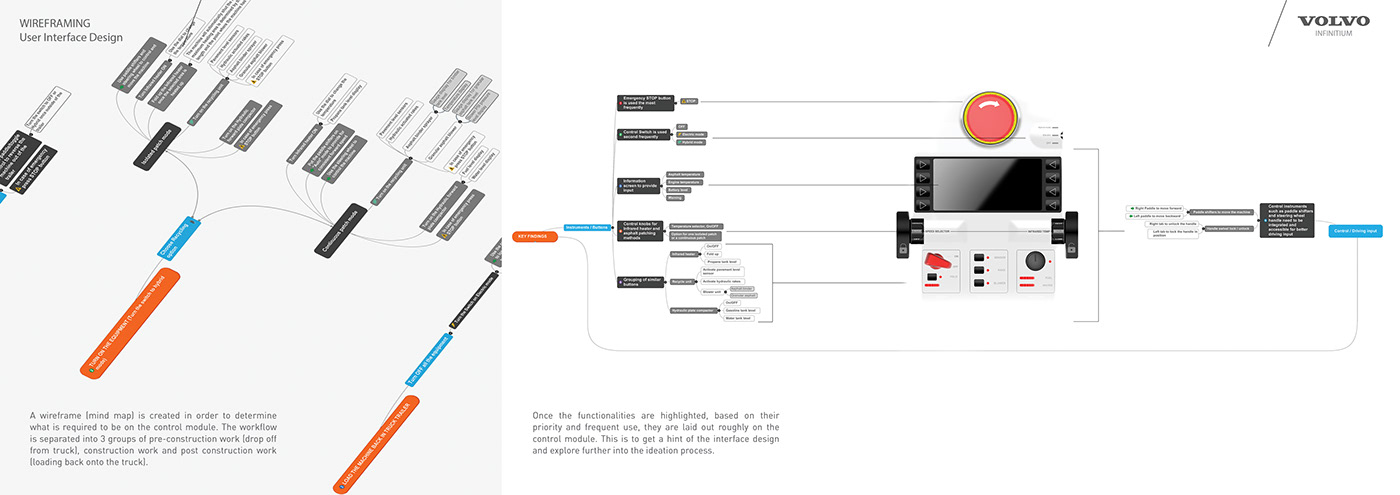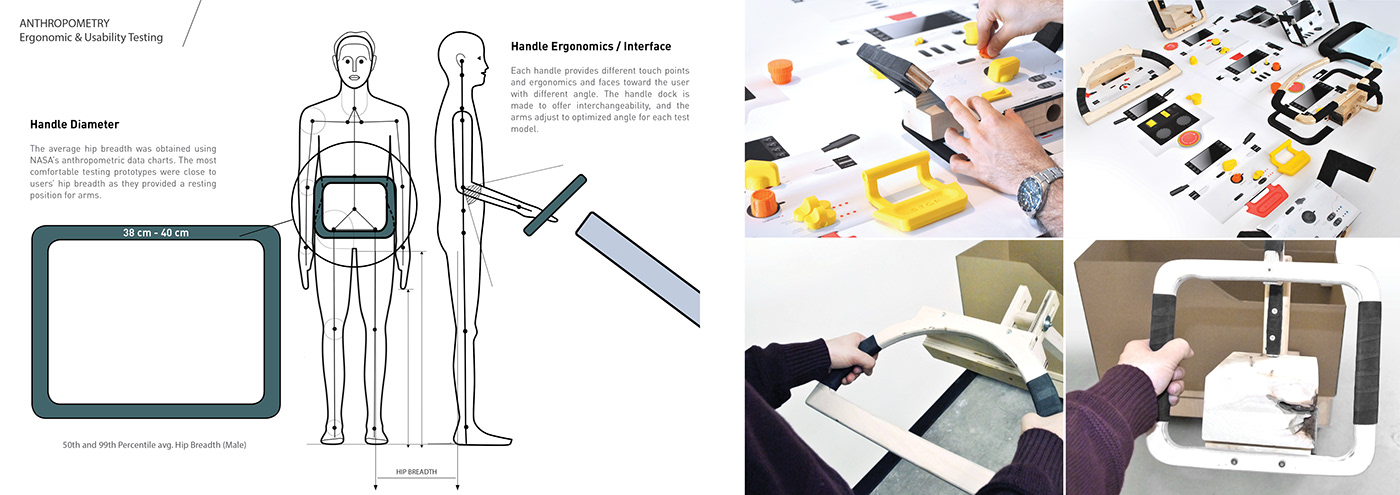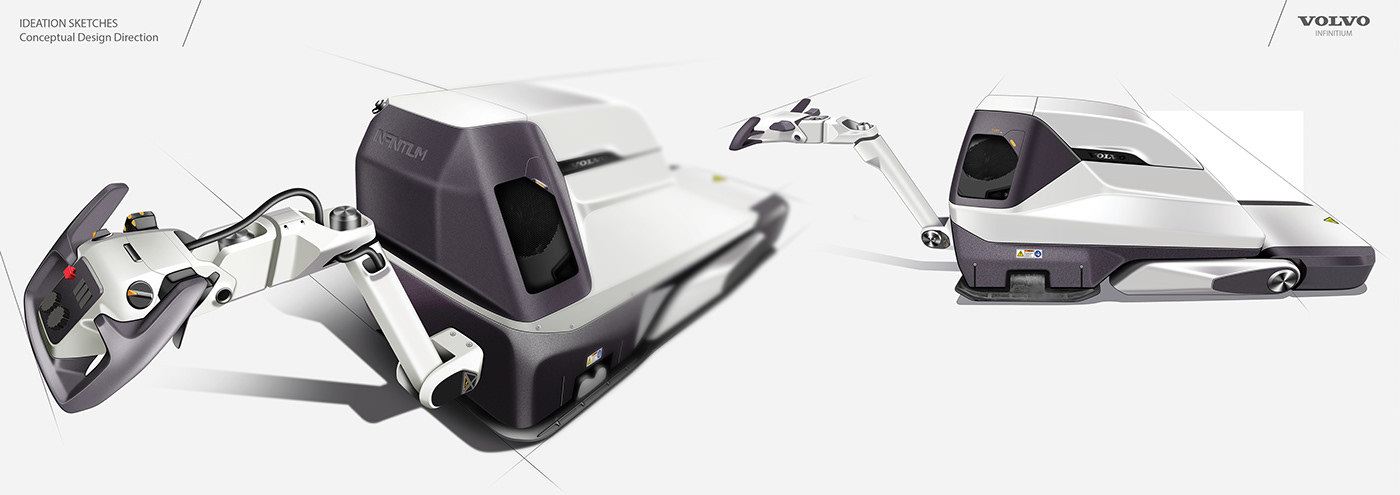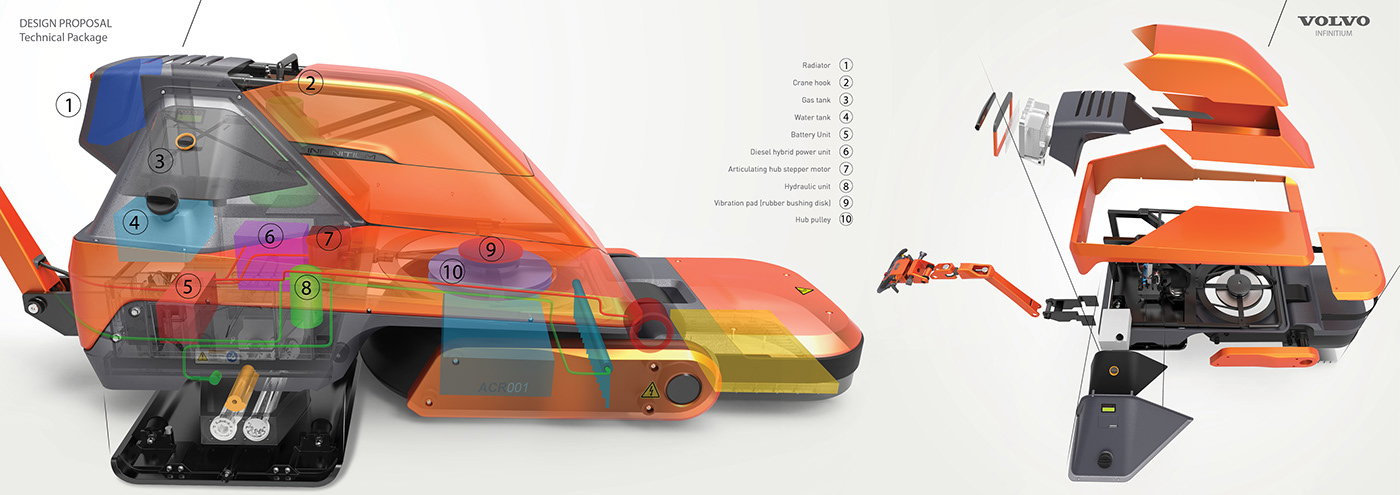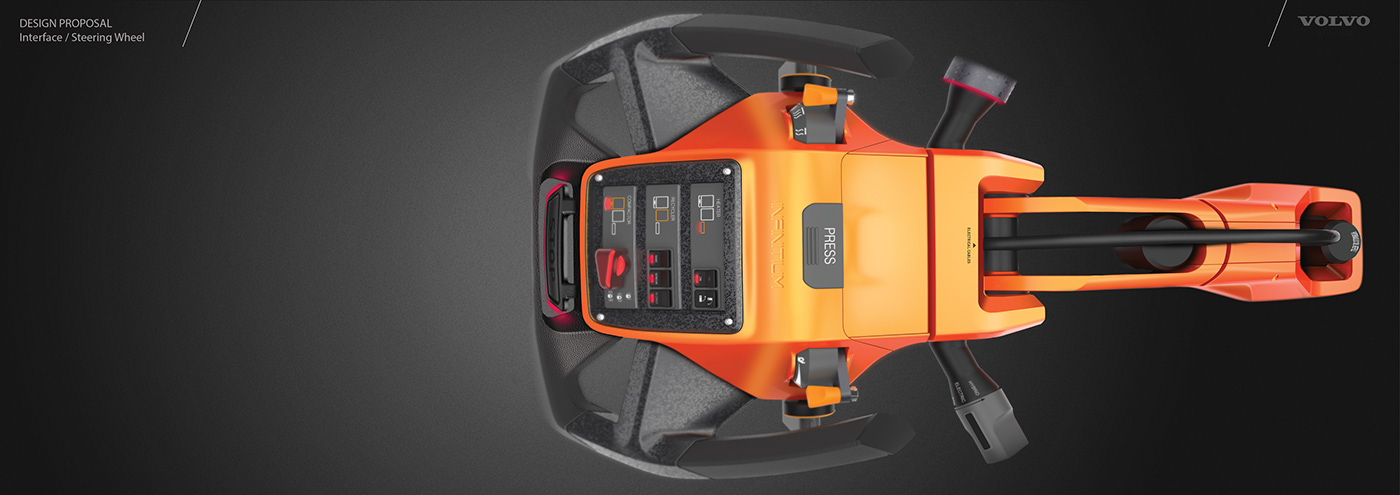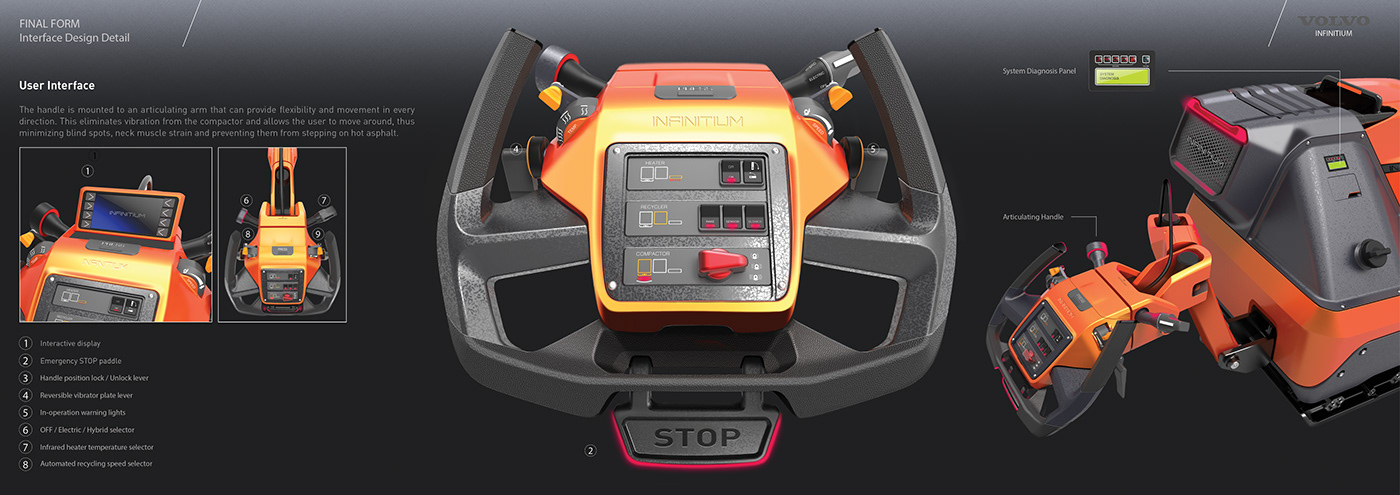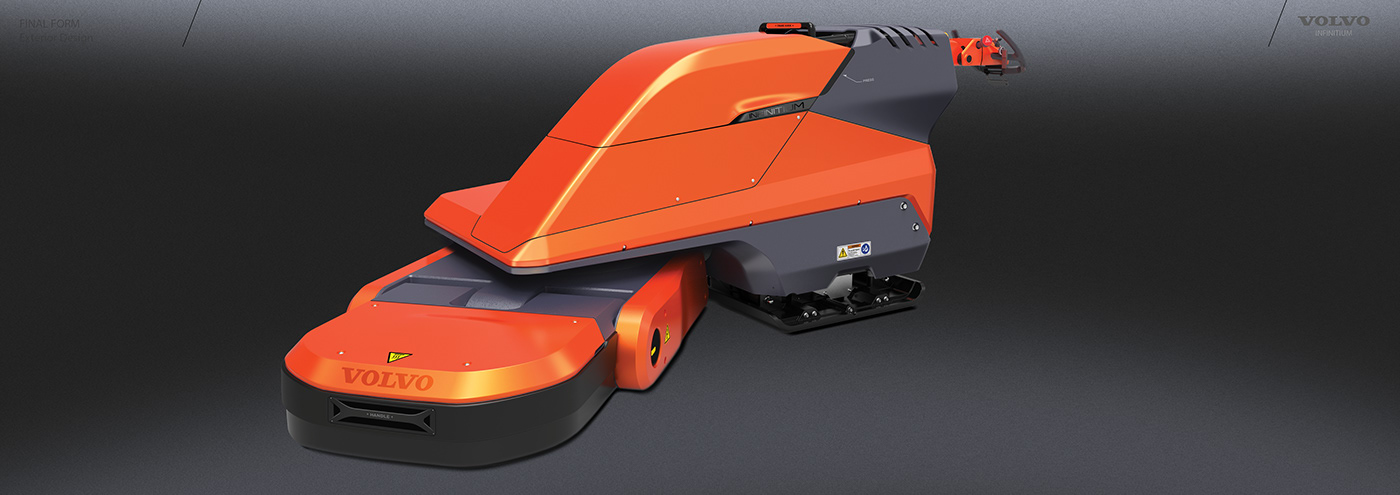ASPHALT RECYCLER
The objective of this project is to address the increasing demand of growing cities and communities for efficient, safe and sustainable transportation systems. Road safety and sustainable development are two important goals put forth to achieve in this project.
This is my student Thesis project and the reason why I named it after Volvo is because of their approach to sustainability and creating ambitious concepts envisioning the future of construction.

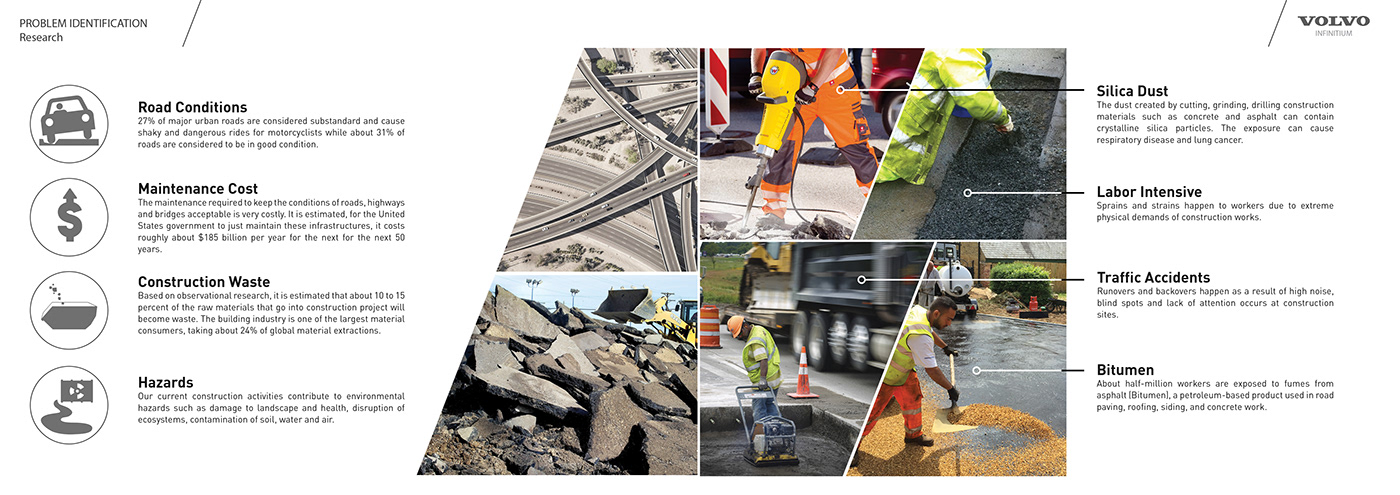
DESIGN OBJECTIVES
With construction industry being one of the largest material consumers (taking about 24% of global material extractions), cutting down on waste and demand on nonrenewable resources using sustainable methods can help reduce the overall cost and environmental hazards.
In order to reduce health hazards, the level of asphalt (bitumen) fumes can be reduced by recycling the existing asphalt on the spot which lowers he demand for new fresh asphalt and diminishes the need to cut away old asphalt that releases cancerous silica dust.
To reduce the traffic congestion and risk of run overs and back overs, the speed and productivity of construction work has to increase. Minimizing the number of tools and workers required will reduce the area of construction zone resulting in less traffic, blind spots and chances of causing accidents.
In order to reduce health hazards, the level of asphalt (bitumen) fumes can be reduced by recycling the existing asphalt on the spot which lowers he demand for new fresh asphalt and diminishes the need to cut away old asphalt that releases cancerous silica dust.
To reduce the traffic congestion and risk of run overs and back overs, the speed and productivity of construction work has to increase. Minimizing the number of tools and workers required will reduce the area of construction zone resulting in less traffic, blind spots and chances of causing accidents.
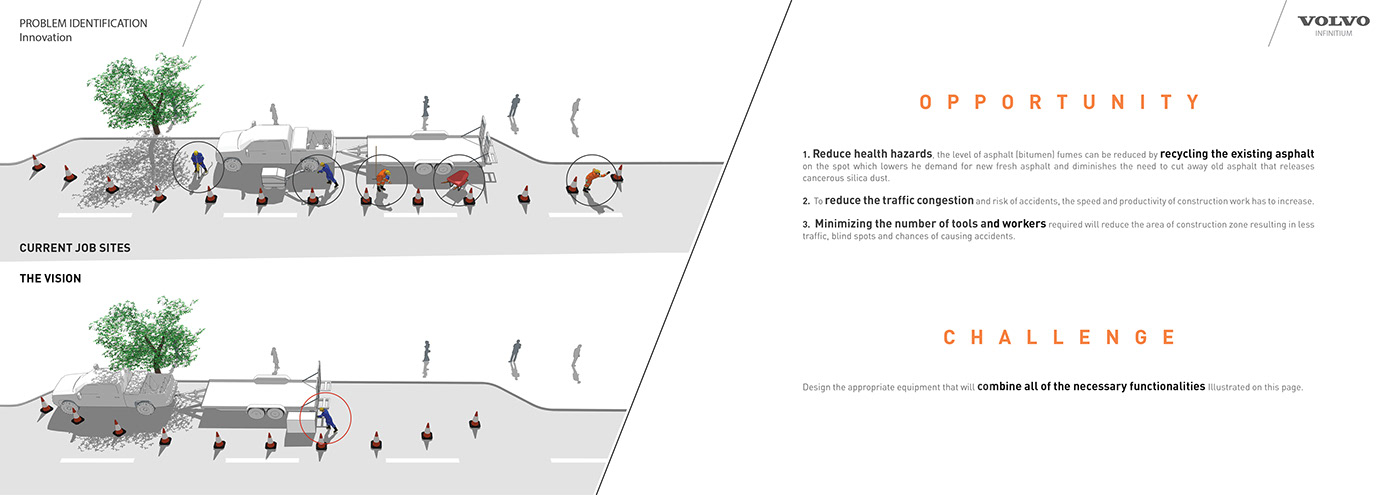
TECHNOLOGICAL OPPORTUNITY
The infrared repair equipment are gaining popularity and growing fast in the industry, since they offer versatility, wide range of repairs and cost effective solutions. Currently, these tools can recycle more than 70% of the existing material, which decreases the cost for new asphalt. Propane gas is used to turn on the infrared heating elements. Then, the heat transforms the asphalt into plastic state. Once the asphalt is soft and hot, it creates a seamless welded edge between the repair area and the asphalt around it which minimizes water seepage, hence making the repair more reliable and sustainable. This method eliminates the need for extra unnecessary equipment, such as asphalt circular saw cutters or jackhammers, loading, trucking and disposal thus reducing the manpower per repair. Moreover, the infrared applications make road construnction & repair possible in winter by heating up the asphalt up to 200 degrees Celsius.
Spray injection pothole patchers are also new to the market. These systems do a great job at spraying separate coats of liquid binder and granular asphalt evenly which fills up the cracks and potholes quickly. However, the finished repairs look messy, uneven and they deteriorate quickly because hot asphalt is sprayed on cooler pavement surface creating a weak bond. Also, there is no compaction done for this method, leaving the asphalt loose. The spray injection method uses a blower at about 4 psi pressure to suck out granular asphalt and liquid binder from their separate tanks and sprays them evenly in order starting from liquid binder first, and finishing with a coat of granular asphalt on top.
There are two types of mid-size hand operated compactors: walk behind compactor rollers and reversible compactor plates. Walk behind compactor rollers use a drum to roll over and create compaction while reversible compactor plates use just an iron plate and two heavy duty counterweight motors attached to the plate which in turn create vibration and compaction force. As a result, they can output the same performance for a smaller size as they save space using just a plate instead of a drum roller.
Spray injection pothole patchers are also new to the market. These systems do a great job at spraying separate coats of liquid binder and granular asphalt evenly which fills up the cracks and potholes quickly. However, the finished repairs look messy, uneven and they deteriorate quickly because hot asphalt is sprayed on cooler pavement surface creating a weak bond. Also, there is no compaction done for this method, leaving the asphalt loose. The spray injection method uses a blower at about 4 psi pressure to suck out granular asphalt and liquid binder from their separate tanks and sprays them evenly in order starting from liquid binder first, and finishing with a coat of granular asphalt on top.
There are two types of mid-size hand operated compactors: walk behind compactor rollers and reversible compactor plates. Walk behind compactor rollers use a drum to roll over and create compaction while reversible compactor plates use just an iron plate and two heavy duty counterweight motors attached to the plate which in turn create vibration and compaction force. As a result, they can output the same performance for a smaller size as they save space using just a plate instead of a drum roller.

